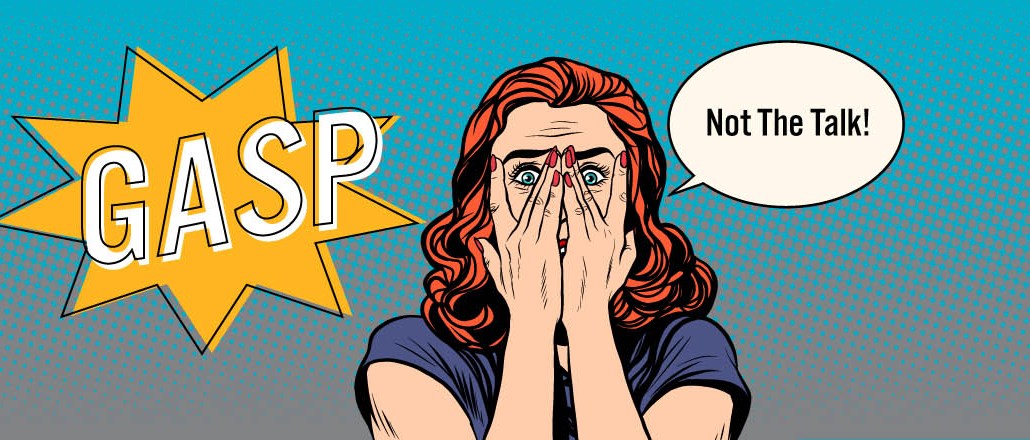The ads go where?! Teaching your editors the birds and the bees of new formats

It’s time for “The Talk.” Yes, that one—the one about the birds and the bees and the incremental revenue squeeze. You’ve watched your publication grow from a scrappy upstart to an influential news source. Your audience has broadened. Your revenue blossomed. Thanks are due, in large part, to your editorial team.
But in order for your business to continue to grow, changes must be embraced. Advertisers and consumers alike want more for less. To reach your full potential, all sides will have to embrace new solutions, and that might mean testing tools, like in-image advertising, that will make your editorial team nervous.
It’s natural for them to be apprehensive. But it’s your job to talk them through the industry’s big changes. Remember, that’s what you signed up for when you went product-side. Luckily, we’ve prepared this simple guide to help you put their fears to rest.
“Running a successful site is so labor intensive! I don’t have time to spend tagging and categorizing images in the CMS so that ads serve correctly.”
Gently stroke your editors’ hair in a soothing, repetitive motion. Whisper softly into their ears: “Real in-image advertising relies on sophisticated image-recognition technology and page context. We would never ask you to work your precious hands to the bone because these”—clasp their hands tightly and reassuringly—“THESE are your instruments, your paint brushes, your sculptor’s chisel! We would never imperil them with tedious ad tagging!”
“What about user experience? We’ve worked to build a sophisticated audience. I don’t want them to be turned off by an ad.
Ask your editorial team to close their eyes and envision a peaceful tableau. It could be a deserted beach; a beautiful, sun-dappled forest glen or a set of perfectly edited posts lined up in the CMS—nirvana! Remind them that in-image advertising, when executed properly, requires only a 20 to 30 percent fill rate to generate substantial added revenue. Ask them to pepper their imaginary landscape with a few pieces of tasteful signage, seamlessly integrated into the scenery rather than blaring on top of it. Have them meditate on this less-than-terrifying scene until their anxieties melt away.
Ad position: web_incontent_pos1
“I lived through pop-ups and flashing banner ads. Display ads are ugly and interruptive. I don’t want them smashed on top of this carefully curated photo of the Amazing Race cast.”
Pour your editors a cup of chamomile tea (renowned for its relaxational properties) and encourage them all to sip freely as you explain. True in-image advertising bears little resemblance to the boorish display ads of yesteryear. While some pretenders have tried to approximate in-image by cramming standard 728 x 90 ad units into tiny image slots, the real deal is considerably more elegant. Creative for genuine in-image is custom-designed to complement, rather than simply cover, standard image formats.
“We’re a serious news organization! I don’t want an ad for Disney cruises running against a photo of Somali pirates.”
Buy your editors a delicious treat, like a cupcake or bourbon, and remind them that neither do the advertisers. In fact, true in-image ads are guided by proprietary image-recognition technology. By scanning not just the image but the context of the page it sits in, a smart in-image provider can prevent an embarrassing mismatch of ad and content. Remind them that their fears are valid and that everything is going to be ok. Everything . . . is . . . going . . . to . . . be . . . oooookaaaaay.
Ad position: web_incontent_pos2
More from Digiday
Sliders test article
Amazon bulldozes into new markets, upending the status quo and challenging rivals. Today, it’s the turn of the ad-supported streaming world, and Amazon is coming out of the gate strong. Why, you ask? Because Amazon is serving marketers an opportunity beginning today to reach a whopping 115 million monthly viewers in the U.S. alone, courtesy […]

How CTV and DOOH are growing this political season for smaller agencies
Connected TV and digital out-of-home are playing a bigger role in upcoming elections and politics – especially for smaller agencies looking to place clients’ dollars.

CMO Strategies: Advertisers identify the top attributes on ad-supported streaming platforms
This is the third installment in Digiday’s multi-part series covering the top ad-supported streaming services and part of Digiday’s CMO Strategies series. In this report, we examine which ad attributes matter the most to marketers on streaming platforms.
Ad position: web_bfu